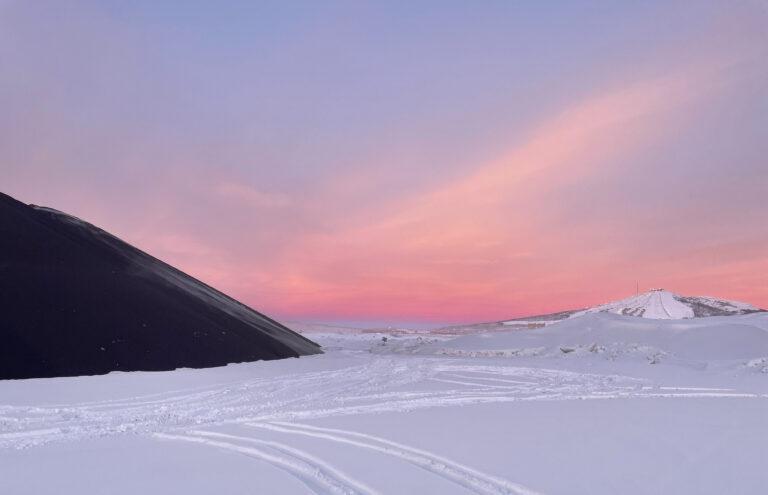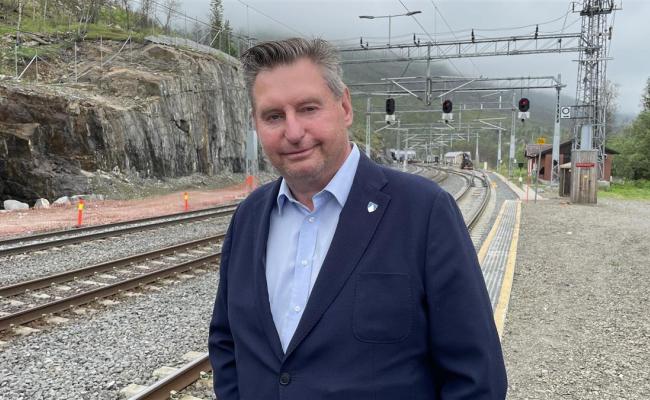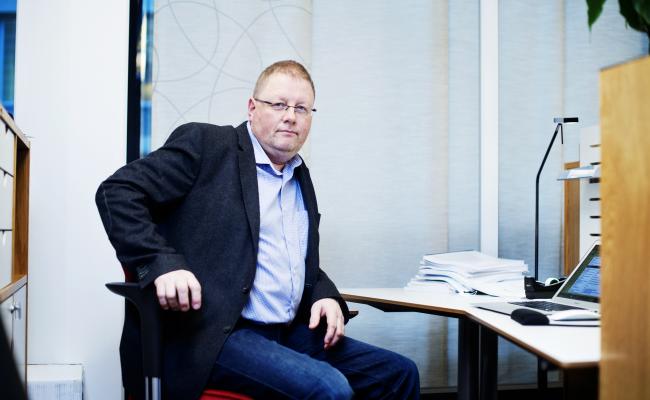The Iron Ore Line Reopens This Week: LKAB Has Products in Stock Equivalent to 400 Ore Trains

Stocks of finished iron ore products continue to grow at LKAB. The Swedish mining company is based in Norrbotten in Northern Sweden and is Europe's largest iron ore producer. (Photo: LKAB).
The mining company LKAB has iron ore products worth millions on hold after the derailment on the Iron Ore Line. Delivering the products in stock to customers can take several years. "We usually run 10 ore trains a day between Kiruna and Narvik, and when the traffic resumes, these will be used to transport the daily production," says LKAB's Press Manager.
The Swedish Transport Administration has updated its prognosis for when the trains can start running again on the northern part of the Iron Ore Line in Northern Sweden. The set date for traffic resumption is February 4th.
Since December, an extensive train derailment on the Iron Ore Line north of Kiruna has put a stop to the traffic on the railway line, which stretches toward Narvik in Northern Norway.
Large stocks of iron ore products
The stop in traffic has led to problems for the mining company LKAB, which extracts iron ore in several mines in Norrbotten county. The company daily transports large quantities of its products on the Iron Ore Line to the ports of Narvik and Luleå, where they are shipped out to the company's customers. Most of the iron ore is sent by rail to Narvik.
The stocks of iron ore products in the industrial areas in Kiruna and Svappavaara have, therefore, grown considerably during the period that the railway line has been closed.
"By the time traffic resumes, there will be approximately 2.5 million tonnes in Kiruna and 0.5 million tonnes in Svappavaara," says Group Media Relations Manager Anders Lindberg at LKAB to High North News.
"These are iron ore products worth SEK several billion. The loss of income has been around 100 million SEK a day during the shutdown," he continues.
Corresponds to 400 fully loaded ore trains
According to LKAB, it will not be possible to catch up with the transport of the ore that has been stored since the train derailment anytime soon.
Lindberg says that since the capacity on the Iron Ore Line was already limited before the derailment, it will take many years before the company can deliver all the products to its customers.
"These are volumes that correspond to approximately 400 fully loaded ore trains. We usually run 10 ore trains a day between Kiruna and Narvik, and when the traffic starts, these will be used to transport the daily production."
"It will be difficult to get access to extra trains, partly because the Swedish Transport Administration plans to carry out extensive maintenance work during the coming ten-year period. This further reduces capacity on the line as traffic is closed during the work period."
The company and a number of other players have long advocated double tracks on the Iron Ore Line to increase capacity.
Safety first
Up to a hundred people have been working around the clock to repair the railway line where the derailment took place. It concerns the replacement of, among other things, sleepers [substrate for railway tracks, ed. note], rails, and overhead lines on a stretch of 15 kilometers.
"Based on the expected weather situation in the coming days, we now have to adjust the forecast to February 4th. The safety of those working in the area will always come first. Under optimal conditions, the previous date (January 31st) would have been reasonable, but when a lot of snow and strong winds are expected in the near future, we are better safe than sorry," says Simon Sunna, Acting Head of the Northern Railway Unit at the Swedish Transport Administration, in a press release.
"Those who have worked in the area have done a really good job based on the conditions we have had. We have worked over a long distance (15 kilometers), and the weather has changed between extremely cold, with temperatures down to -35 degrees, and periods of snowfall and gales. This has meant that the production rate in certain periods has been anything but optimal. Now we are nearing the final sprint, but we will not compromise on safety, and that is why we are now setting a new date," adds Sunna.




